Your Planets
Portraits of the Planets
Aspects between Planets
The planetary ages
The planetary families
Planets in Signs
The Planets in comics


Since the dawn of humanity, man has wondered about his near or distant future. He imagined many techniques to foresee it, and thus to try to ward off the blows of fate or to launch his businesses at the most favorable moment. Astrology, clairvoyance and tarot cards are among these “predictive methods” the most known. What sets them apart?
Since the dawn of humanity, man has wondered about his near or distant future. He imagined many techniques to foresee it, and thus to try to ward off the blows of fate or to launch his businesses at the most favorable moment. Astrology, clairvoyance and tarot cards are among these “predictive methods” the most known. What sets them apart?
Seen from the immediate present, the future is the unknown. And the unknown is the lack of points of reference, the anxiety of the unexpected or the hope of better times. What’s going to happen? Will the days, months or years ahead be good or bad? Is the future written somewhere? And if so, where? Is there a great book of destiny where our future is definitely written and planned? Or is the future just a movie screen onto which we project our desires and fantasies?
Can we really predict the future? Meteorologists do not see beyond the end of their noses for the moment: a week at most, and even then, their forecasts are often contradicted by the facts. Futurologist-economists keep getting it wrong when they predict growth rates or stock prices. In fact, the future is largely unpredictable with rational means and methods. So, as Voltaire said, “astrologers alone cannot have the privilege of always being wrong.”
In order not to confuse astrologers, card drawers and clairvoyants, it is essential to distinguish between forecasting and prediction. Predicting is not predicting. Forecasting is extrapolating one or more possible futures from the present situation in which we find ourselves. If you find that the swallows have been flying low for some time, you can plan that the chances of rain are very high, even if you don’t know everything about the mechanisms of atmospheric pressure, a natural phenomenon to which swallows react. However, you will be unable to predict exactly when and where the rain is going to fall, in what quantities and for how long… unless you are in on the secret of the gods or, in other words, have phenomenal intuition.
Astrologers claim to be able to plan, but not to predict. If an astrologer predicts anything for you, tell yourself that he is a crook, an ignoramus, a charlatan… or that he is a bit clairvoyant. In the latter case, if his predictions turn out to be correct, it will be his gifts of clairvoyance that will be the cause, and not his knowledge of astrology.
Fortune-tellers or clairvoyants, on the contrary, claim to be able to make exact predictions as to the nature of the events that await you. The problem is that most Tarot card and crystal ball professionals don’t “see” anything at all. A tiny minority actually has an intuition and prescience of the future. But how to recognize them in the midst of a majority of enlightened and cynical profiteers of human distress?
The Tarot is first and foremost a card game, that is to say a collection of cardboard rectangles on which symbolic images have been printed. In the beginning, a very long time ago, the Tarot was only used to play… tarot for example. From the 16th century AD, occultists and alchemists began to use it as a tool for forecasting and prediction.
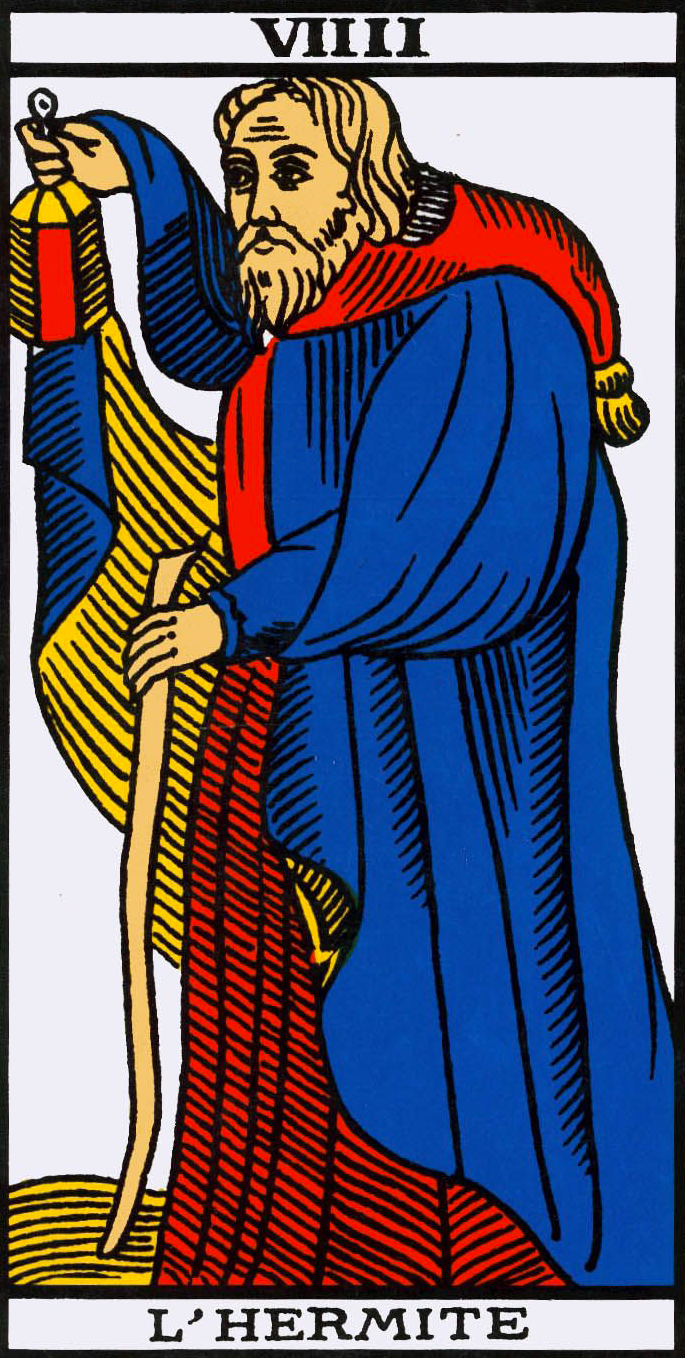
The Tarot de Marseille is both the most famous and the favorite of fortune-tellers. It consists of 78 cards, also called “blades” or “arcana”. It is divided into 21 “major arcana” and 56 “minor arcana”. Only the card “the fool” does not include a number, no doubt because madmen are basically unclassifiable and indecipherable. By interpreting the 21 + 1 major arcana, the cartomancer claims to be able to predict the destiny of his consultant, which will be refined and clarified thanks to the minor arcana.
Each of the cards has various meanings: esoteric, astrological, symbolic and numerological. Tarot readers pick arbitrarily within these meanings. Depending on the order in which the blades come out and according to their particular techniques, they will predict ruin or fortune in love, health or business.
Only a madman can think that the future is written in strips of printed cardboard. Taromancy is not a science. The cards only serve as visual supports for the imagination, projections, delusions, visions or intuitions of the cartomancer. A tarologist devoid of psychological flair and intuition will only ever see in the cards the fantasies of his imagination… for which he will almost always make you pay dearly. At best, the Tarot is just a “medium of clairvoyance”, more or less effective depending on who uses it. What is important, therefore, is not the Tarot, but the fortune-teller. A card reader without intuition or the gift of clairvoyance is like a knife without a handle that lacks a blade: it brews illusions and is useless.
What is clairvoyance? Where does this gift come from that allows certain individuals to predict the future with maximum clarity and precision? Mystery…
Let us emphasize right away that the number of authentic clairvoyants — it is a fact, they exist, even if it is disturbing — is extremely small. Most clairvoyants see nothing at all, but extrapolate a hypothetical future based on the chimeras of their own imagination and the behavior of their consultants. Without being a fanatic skeptic, we can consider that no more than 1% of those who claim to be sighted have a real gift. And they are generally not the best known and the most media, that is to say…
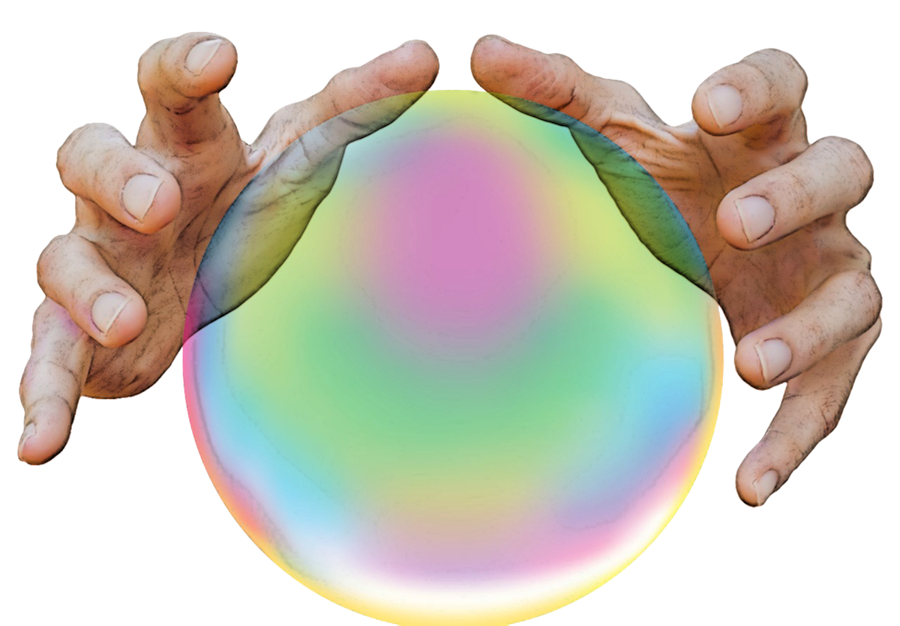
How can such a strange phenomenon as clairvoyance be possible? To explain it, perhaps we have to question our conceptions of Time. We are used to considering that Time unfolds linearly on an arrow that starts from the past and goes through the present to head towards the future. In this view, one can only know the effects (the future) if one knows the past or present causes. Since you never know all the causes, the future would be at best somewhat predictable, at worst not predictable at all.
But there is another conception of time, which esotericists and mystics have never ignored, but which modern physicists are only beginning to discover and experiment with: it is synchronic and simultaneous time. In this perspective, Time is no longer just an arrow pointing towards the future, but a global reality where past, present and future are contained in each passing moment. The seers would then have “antennae” more sensitive than ours, which would allow them to “see” the future in the present.
Some do clairvoyance “pure”, without support of any kind. Others need to go through intermediate objects, such as crystal balls. The future does not appear in these balls, any more than it is inscribed in the blades of the Tarot: it is the seers who, by concentrating on them, stimulate their gift of vision… unless you believe that the cardboard printed, crystal and coffee grounds have magical properties that allow them to reveal global time better than silk, emerald or wine dregs.
Finally, you should know that authentic clairvoyance is a discontinuous phenomenon: you are not clairvoyant 24 hours a day, nor every day of the week. Those who claim to “see” all the time are liars and scammers. And let’s not talk about clairvoyants by telephone and minitel…
A real astrologer does not use Tarots or crystal balls to look into the future, but astronomical tables that allow him to know at what moment in his cycle such and such a planet is. Knowing nature, the “profile” astro-psychological of this planet, he can predict that it will mark such and such a period of its imprint.
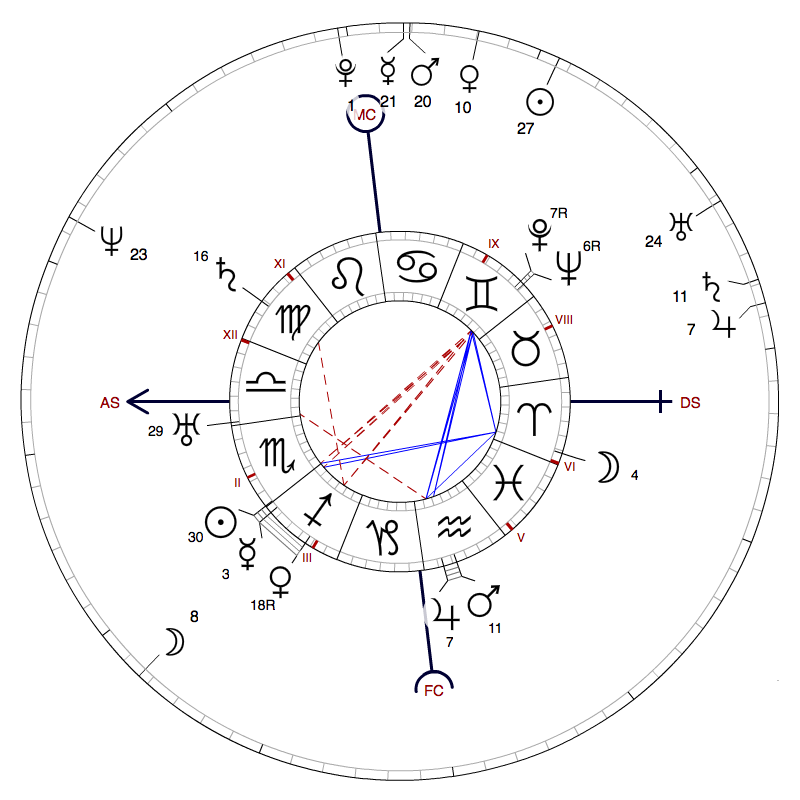
This is how at the moment of his birth, each of us inherits a real “planetary timeline” which allows the astrologer to predict which will be the most tense and relaxed periods on the affective, social, spiritual and professional levels. The passage of a planet over a specific point of the natal chart is called “planetary transit”. When the astrologer observes, for example, that the planet Saturn is going to pass over the position occupied by Mars at the birth of an individual, he knows that for about a year, the latter will find himself more torn than ever between the demands of immediate action and those of reflection, hindsight. He can therefore predict that his consultant will live in this precise astro-psychological climate, but if he is not sighted, he is unable to predict how the latter will react to this “astrological climate”. It depends on too many extra-astrological parameters: his health, his emotional or professional environment, etc.
An astrologer can therefore give you the following forecast: “In two years, you will find yourself more frequently than usual in situations where you will wonder whether to go for it or take a step back.” This prediction will be accurate. During the consultation, he will have assessed whether you are more apt to go for it than to take a step back, or the reverse; by asking you about how you experienced previous similar periods, he will also assess what are the most likely behaviors that you are likely to adopt in this type of situation, and will thus be able to advise you usefully on what to do in the situation. future and on the mistakes of the past not to be repeated. That’s all. On the other hand, if an astrologer predicts: “In two years, you might have a train wreck because Saturn looks bad to your Mars”, run away, even if the so-called astrologer in question writes a weekly column in a famous TV program magazine: astrology alone cannot predict specific events.
Article published in issue No. 1 of the Astrologie naturelle (December 1997).
▶ Astrology and clairvoyance: the difference
▶ How to choose one’s astrologer?
▶ Choose your “seer”
▶ L’astrologie peut-elle prévoir l’avenir ?
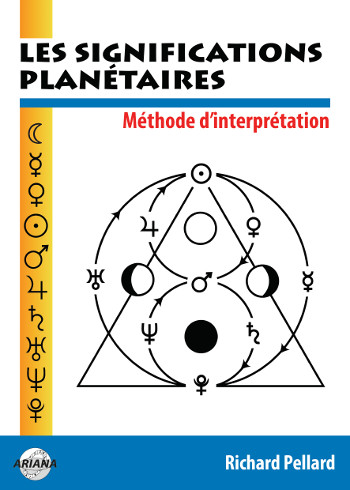
Les significations planétaires
par
620 pages. Illustrations en couleur.
La décision de ne traiter dans ce livre que des significations planétaires ne repose pas sur une sous-estimation du rôle des Signes du zodiaque et des Maisons. Le traditionnel trio Planètes-Zodiaque-Maisons est en effet l’expression d’une structure qui classe ces trois plans selon leur ordre de préséance et dans ce triptyque hiérarchisé, les Planètes occupent le premier rang.
La première partie de ce livre rassemble donc, sous une forme abondamment illustrée de schémas pédagogiques et tableaux explicatifs, une édition originale revue, augmentée et actualisée des textes consacrés aux significations planétaires telles qu’elles ont été définies par l’astrologie conditionaliste et une présentation détaillée des méthodes de hiérarchisation planétaire et d’interprétation accompagnées de nombreux exemples concrets illustrés par des Thèmes de célébrités.
La deuxième partie est consacrée, d’une part à une présentation critique des fondements traditionnels des significations planétaires, d’autre part à une présentation des rapports entre signaux et symboles, astrologie et psychologie. Enfin, la troisième partie présente brièvement les racines astrométriques des significations planétaires… et propose une voie de sortie de l’astrologie pour accéder à une plus vaste dimension noologique et spirituelle qui la prolonge et la contient.
Téléchargez-le dès maintenant dans notre boutique
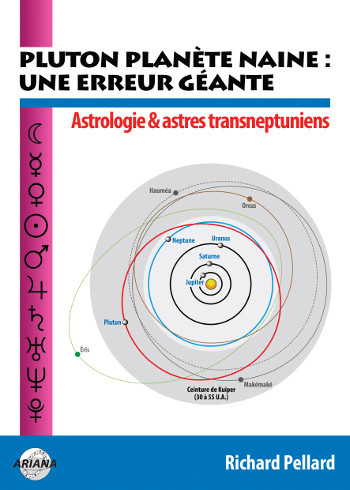
Pluton planète naine : une erreur géante
par
117 pages. Illustrations en couleur.
Pluton ne fait plus partie des planètes majeures de notre système solaire : telle est la décision prise par une infime minorité d’astronomes lors de l’Assemblée Générale de l’Union Astronomique Internationale qui s’est tenue à Prague en août 2006. Elle est reléguée au rang de “planète naine”, au même titre que les nombreux astres découverts au-delà de son orbite.
Ce livre récapitule et analyse en détail le pourquoi et le comment de cette incroyable et irrationnelle décision contestée par de très nombreux astronomes de premier plan. Quelles sont les effets de cette “nanification” de Pluton sur son statut astrologique ? Faut-il remettre en question son influence et ses significations astro-psychologiques qui semblaient avérées depuis sa découverte en 1930 ? Les “plutoniens” ont-ils cessé d’exister depuis cette décision charlatanesque ? Ce livre pose également le problème des astres transplutoniens nouvellement découverts. Quel statut astrologique et quelles influences et significations précises leur accorder ?
Enfin, cet ouvrage propose une vision unitaire du système solaire qui démontre, chiffes et arguments rationnels à l’appui, que Pluton en est toujours un élément essentiel, ce qui est loin d’être le cas pour les autres astres au-delà de son orbite. Après avoir lu ce livre, vous saurez quoi répondre à ceux qui pensent avoir trouvé, avec l’exclusion de Pluton du cortège planétaire traditionnel, un nouvel argument contre l’astrologie !
Téléchargez-le dès maintenant dans notre boutique